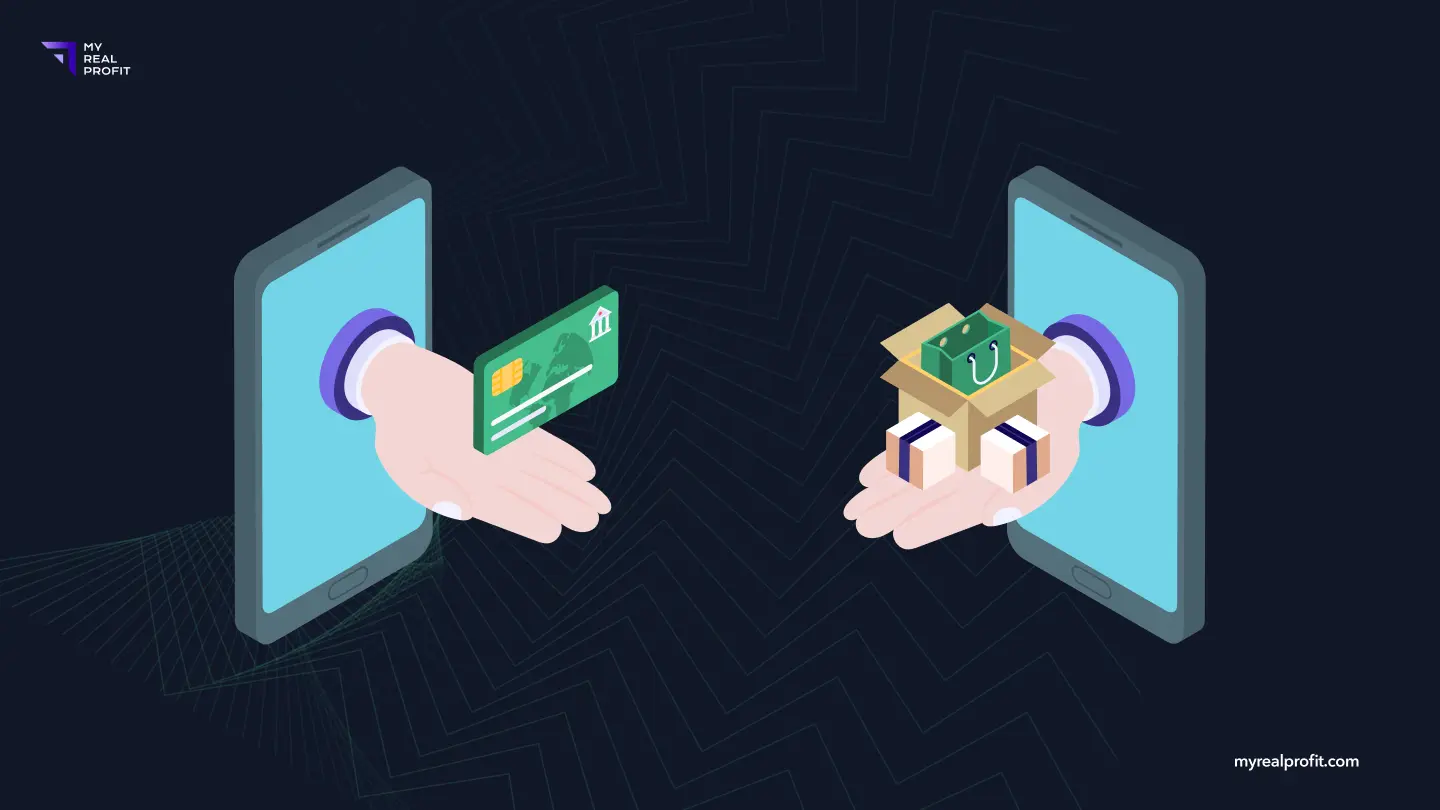Selling on Amazon has never been easier, as nowadays you have the opportunity to sell without the burden of holding physical inventory. This approach allows people to enter the e-commerce business with reduced upfront costs and less risk, making it an attractive option for a novice Amazon seller.
In this article, we’ll guide you through the various methods for selling on Amazon without inventory, such as dropshipping, fulfillment models, and selling digital products. Moreover, you’ll discover the basics of selling on Amazon & follow a step-by-step guide on how to set up an account and choose profitable products to purchase. Just keep reading, we’ve got you covered.
What to Know Before Selling on Amazon
Amazon is one of the largest and most popular online marketplaces, founded in 1994 by Jeff Bezos. The platform provides more than 9 million individuals and businesses with the opportunity to sell products to Amazon’s vast customer base. This exactly shows the high level of competition among sellers. That’s why before entering the platform, prepare carefully and take into account the following tips.
7 Key Points for Selling Products Online
Create detailed product listings with descriptions, high-quality images, and correct prices.
Handle the fulfillment process by choosing Fulfillment by Amazon (FBA) or Fulfillment by Merchant (FBM).
Make sure to find out all about Amazon fees including referral fees, fulfillment fees, and storage fees.
Provide excellent customer service by quickly processing customer inquiries and managing returns promptly.
Use Amazon promotional tools and advertising to level up the product’s visibility and gain more potential customers.
Encourage positive reviews and maintain a good seller rating to build trust with customers.
Check the legal and tax obligations according to your business.
Traditional Selling vs. Selling without Inventory
Traditional selling on Amazon means that a seller has their inventory. So, before placing a product on the platform, sellers purchase inventory in advance, search for a place to store, list the products on sale, and then handle customer service. Such a business model aims for investment in inventory, space for storage, and a system for order fulfillment.
While selling on Amazon without inventory, a seller doesn’t own the products they list. They use other sellers’ inventory to fulfill orders.
How to Be an Amazon Seller Without Inventory
If you are wondering how to sell on Amazon without inventory, you can consider 3 options and choose the most suitable for you:
FBM
Dropshipping
Digital Products
Amazon FBM Program: Freedom of Inventory Selling
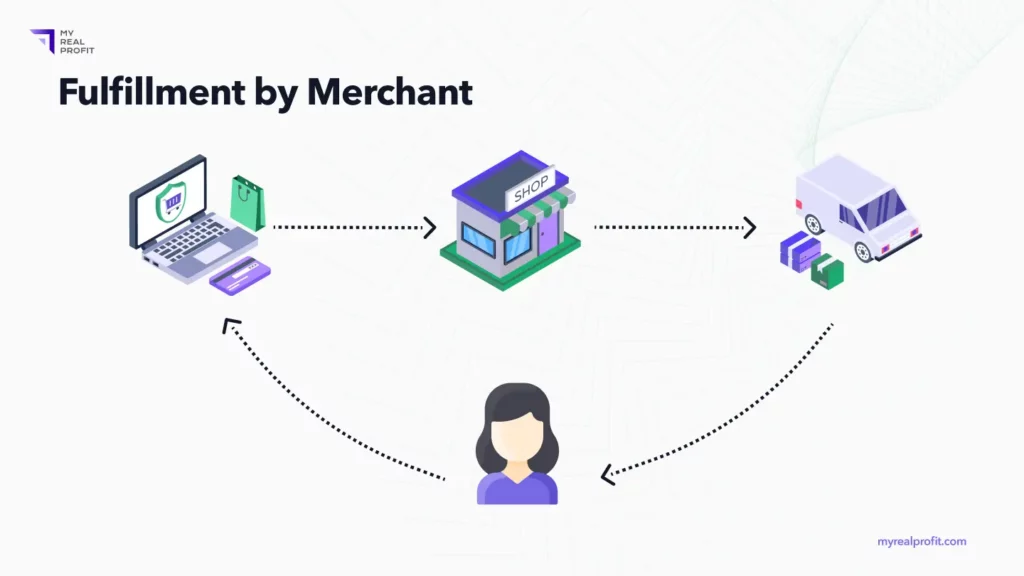
Amazon FBM, or ‘Fulfillment by Merchant’, considering you can list your products on Amazon and take advantage of their massive customer base and shipping network, without the need to store and manage inventory yourself. To do so, you can use one of the FBM’s methods called dropshipping.
What is Dropshipping & How It Works?
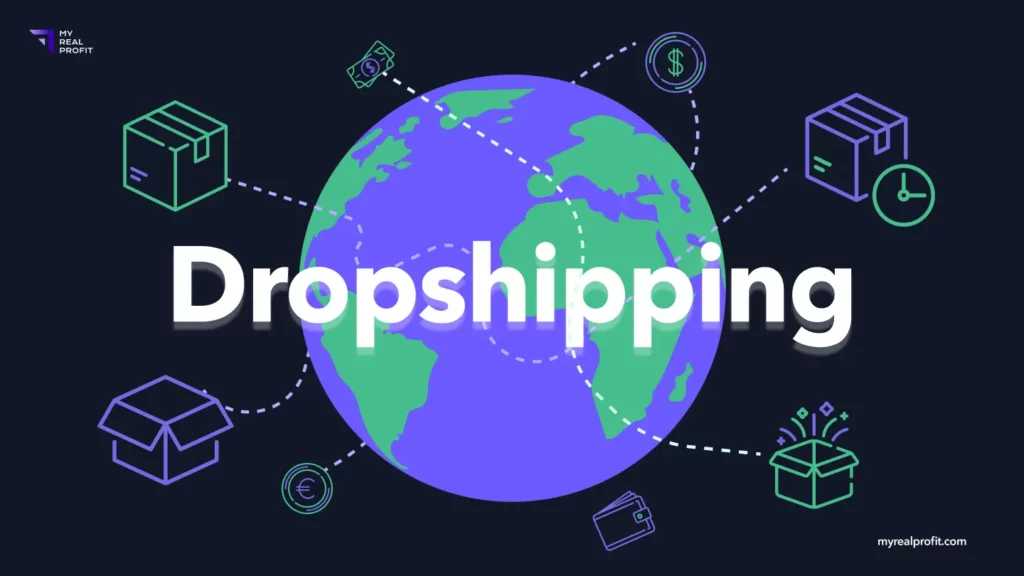
The concept of Amazon dropshipping is to list products from dropshipping suppliers on your Amazon seller account. So when a customer orders something, you pass that order to the supplier, and they handle everything from there.
For this, you need to use the supplier’s delivery. This requires third-party logistics providers that can help you deliver your customer’s orders quickly and efficiently. Such companies provide warehousing, fulfillment, and shipping logistics services to businesses. They are as a middleman between you and your customers.
However, it’s not necessary to use only one supplier for dropshipping on Amazon. Using multiple suppliers can be beneficial in terms of product selection and pricing.
When using multiple suppliers, it is important to keep track of inventory levels from each supplier to avoid overselling.
Tips to Sell on Amazon via the Dropshipping Suppliers
Choose a niche with the most FBM products & do deep research to find reliable suppliers who offer dropshipping services.
Create an Amazon seller account and choose between an individual or professional account. The second one offers more tools and features.
After you’ve found the suppliers, start listing their products on your Amazon store. Craft appealing product listings with high-quality images, detailed descriptions, and relevant keywords.
Optimize your store by implementing marketing strategies and making it customer-friendly. Provide customer service support to build trust and positive reviews.
Analyze your process and results by checking on your sales, customer feedback, and market trends. Adapt your product offerings and strategies accordingly to stay competitive.
The Pros and Cons of Dropshipping
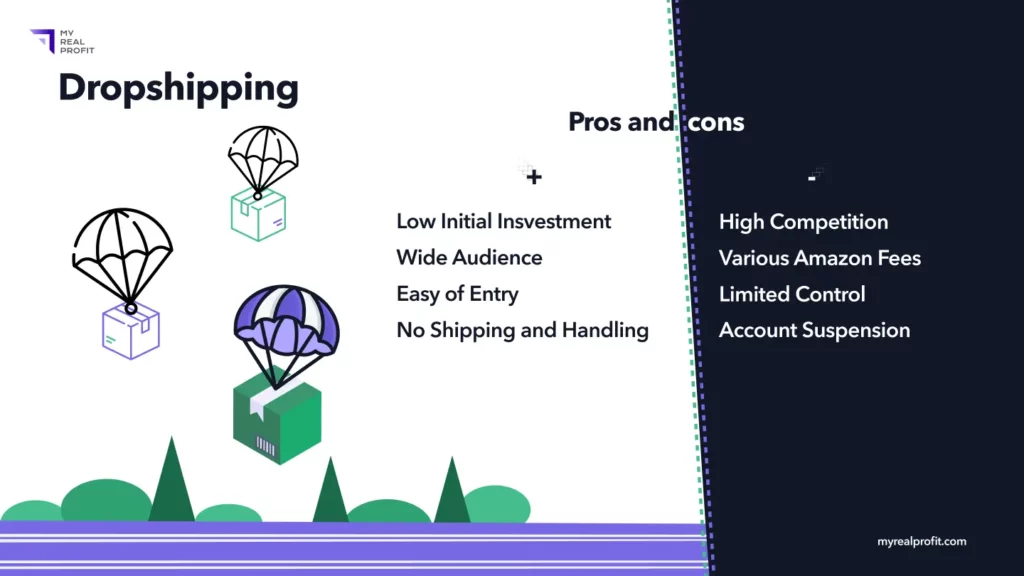
Pros of Dropshipping
Low initial investment
No need for carrying inventory, which reduces upfront costs.
Wide audience
Amazon has a massive worldwide customer base, which can broaden your business to a new audience.
Ease of entry
Starting selling on Amazon is relatively straightforward if you have delved into this topic and want to set up a dropshipping business.
No shipping and handling
You don’t have to deal with packing, shipping, or storage logistics.
Cons of Dropshipping
Amazon fees
Amazon charges various fees, including referral and fulfillment fees, which can eat into profits.
Limited control
You have limited control over product quality, shipping times, and customer experience, which can lead to negative reviews.
Account suspension
Due to Amazon strict policies, your account can be suspended or terminated.
High competition
It can be challenging to stand out because of the high competition in the market.
Selling Digital Products on Amazon
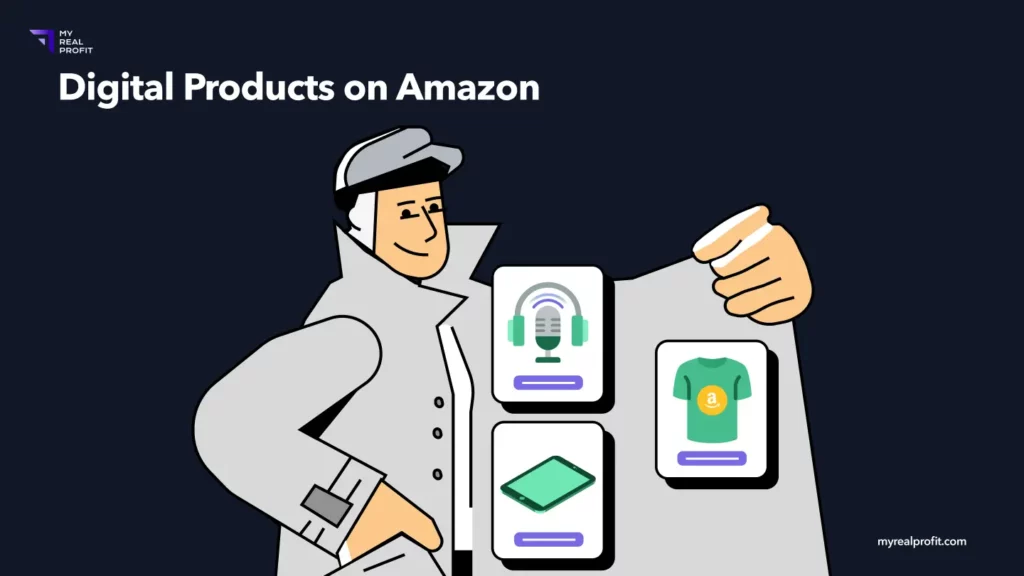
If you’re keen on how to start a successful Amazon business without the need to manage inventory, your solution is to sell digital products.
Digital products have a distinct advantage – they require no physical storage space, and no need for expensive warehousing. Instead, you only need a computer or cloud storage, a better alternative.
Moreover, despite the high competition on the platform, every Amazon online business can stand out if it finds an untapped and prospective dropshipping niche. For the creative ones, there is the option of joining Printify. It is a print-on-demand service that allows sellers to create and sell their digital products on Amazon. This means that you can customize and design your products, while Printify takes care of the printing and shipping process for you.
How to Identify Profitable Products to Sell on Amazon without Inventory
You can identify profitable products to sell on Amazon without inventory in several ways:
Use the programs for product research that will help you to identify gaps in the market and gain insights into what products are in demand and which ones have the potential for high sales on Amazon;
Analyze trends to predict consumer behavior and give an idea of what products will be popular in the future;
Pay attention to the bestseller products on Amazon;
Check customer reviews to grab information about a product’s popularity and potential for profit.
How to Set Up an Amazon Seller Account
After you’re sure what and how to sell on Amazon without inventory, you have to create an account. Follow the 9 main steps below.
9 Steps to Start Selling Products on Amazon
Go to the ‘Start selling with Amazon‘ page.
Click on the ‘Sign in‘ button, then push the ‘Create your Amazon account‘ (if you already have an account, just sign in).
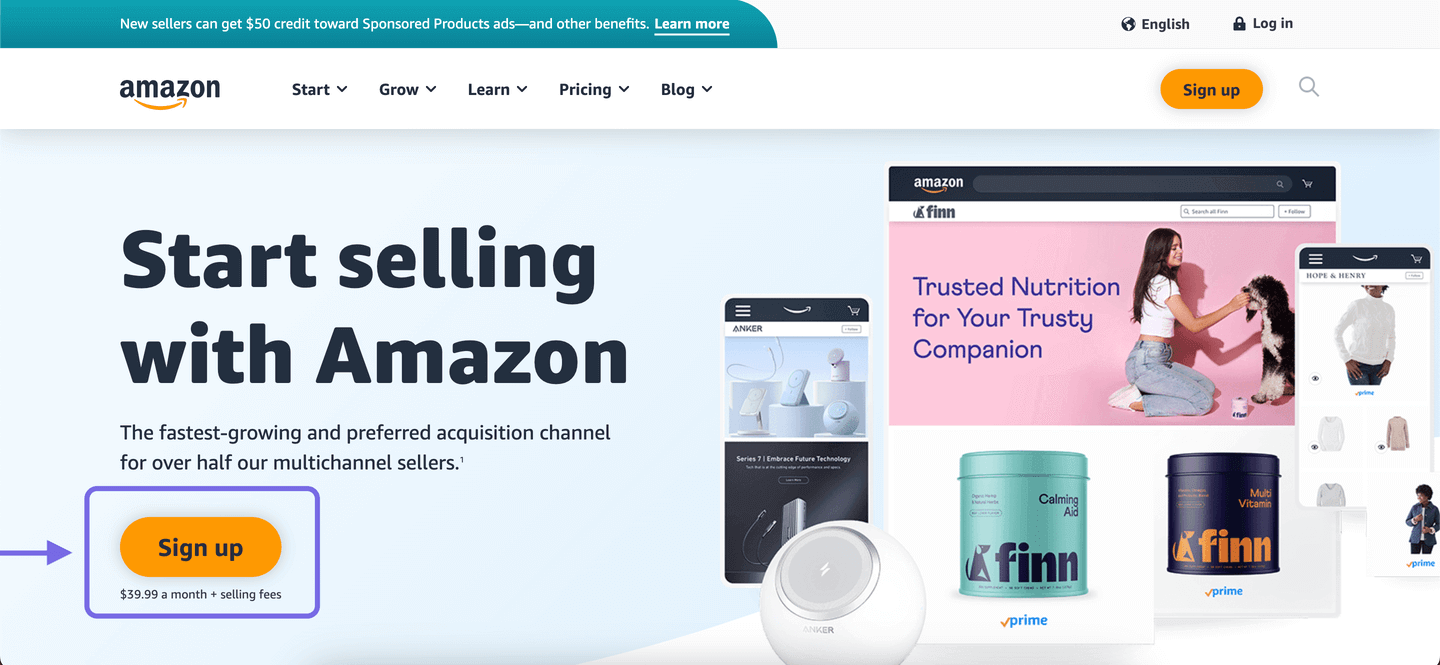
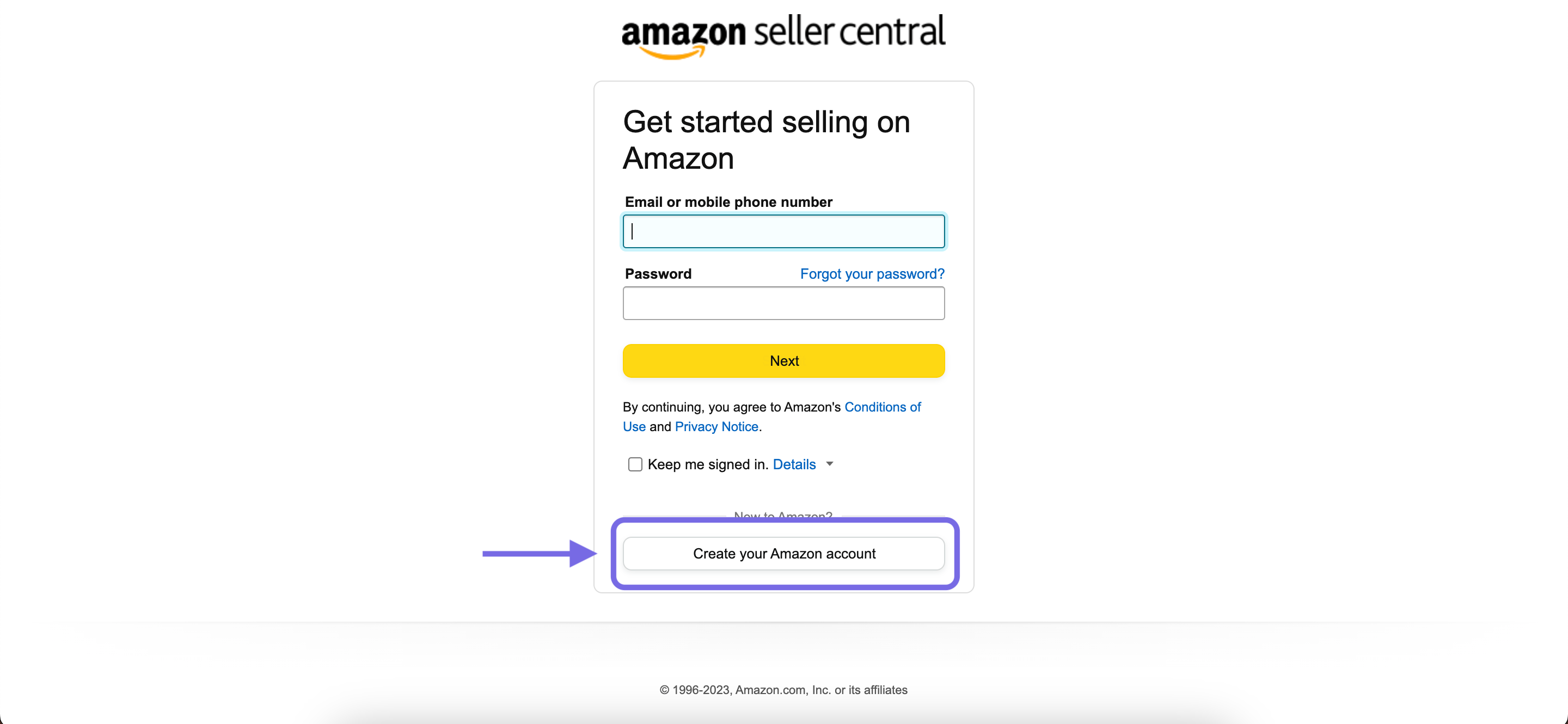
Write down all the required info and confirm your email with the OTP code.
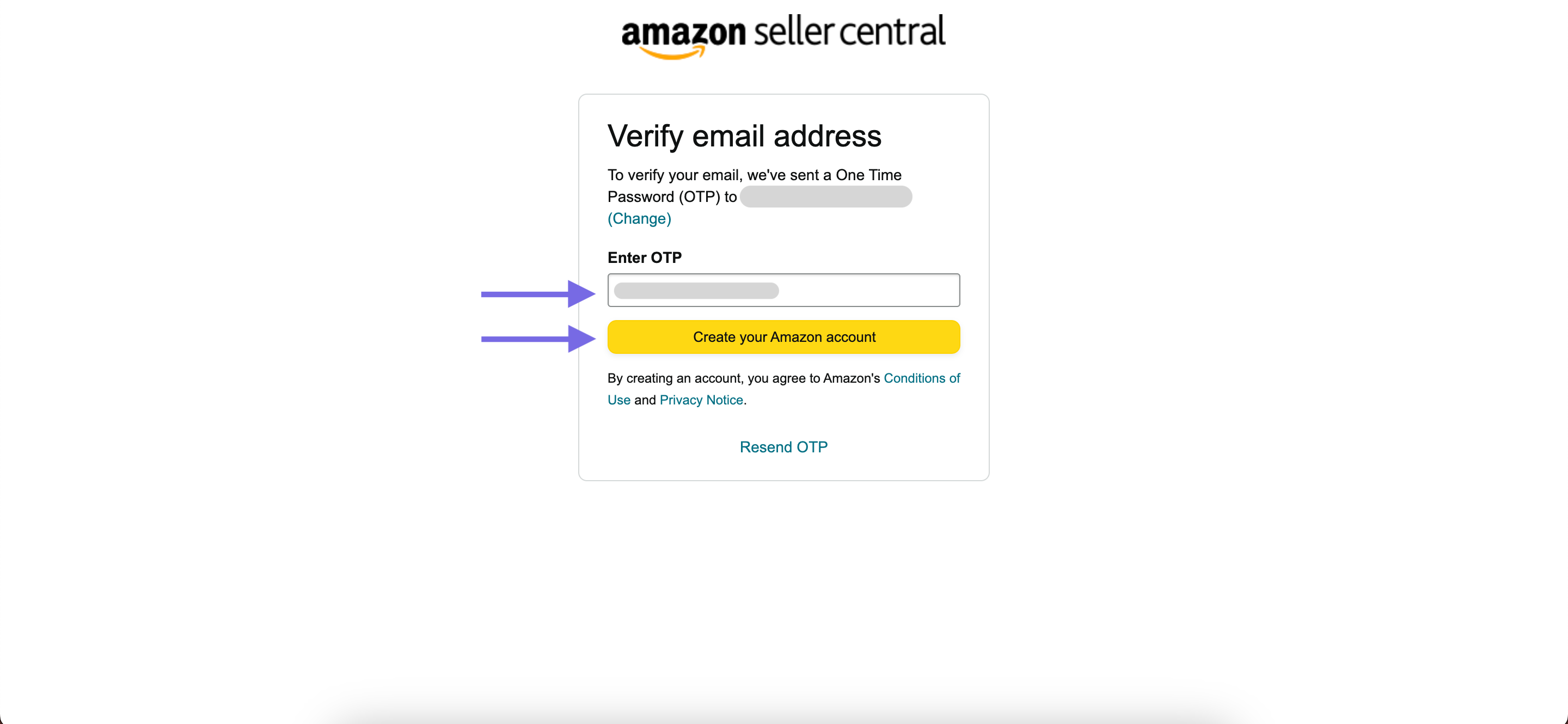
Make sure you have all the following requirements and click the ‘Begin‘ button.
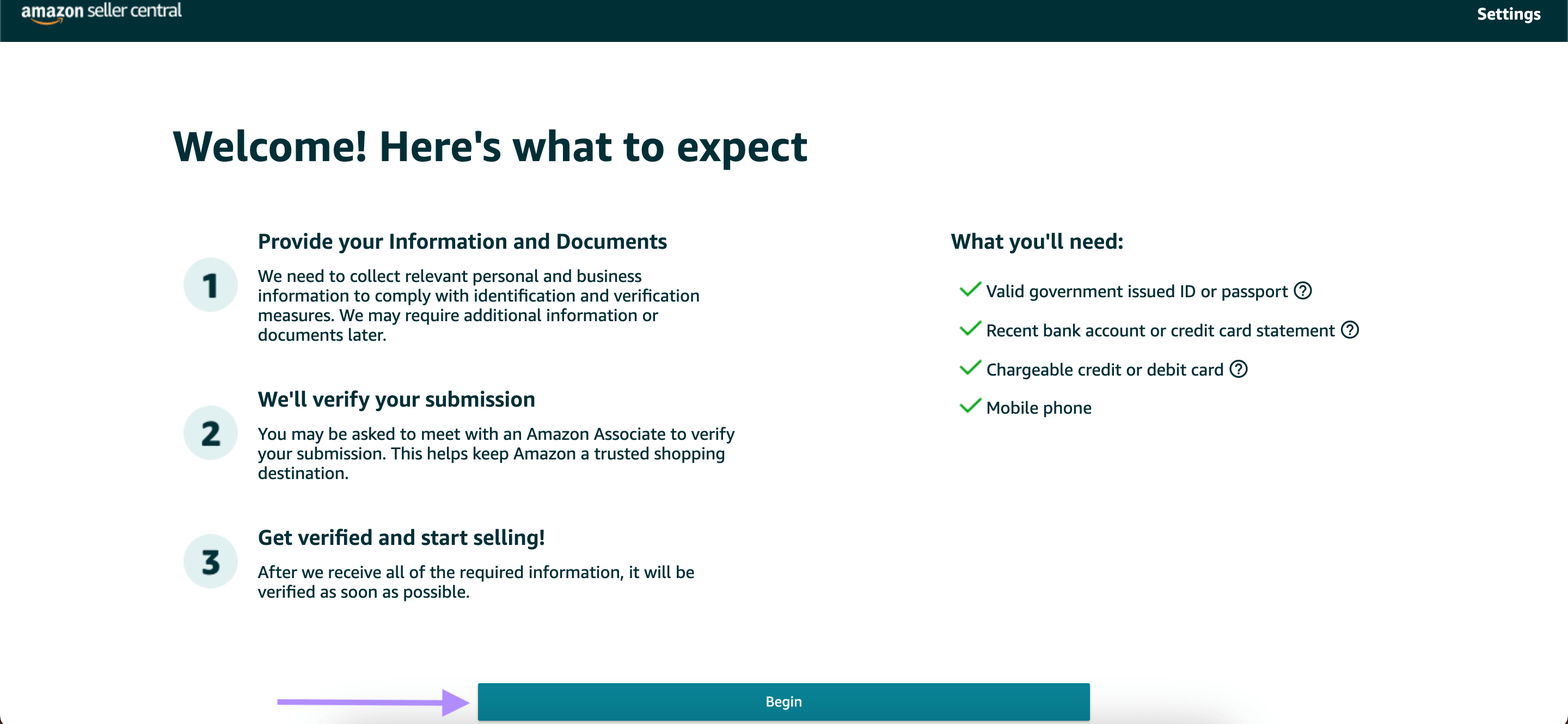
Choose a selling plan: Individual for $0.99 per sale or Professional for $39.99 per month (no matter how many sales were made).
Fill out the necessary information correctly: your legal name, address, and phone number.
Set up a payment method providing Amazon with your bank account and a credit card.
Fill out the tax information via the step-by-step guidelines by Amazon.
Create your store (name, description, etc.) and list the products for sale.
That’s it!
To Sum Up
Selling on Amazon without inventory presents an innovative e-commerce business model. If you master the basics of Amazon, select the right and high-quality products, set up your seller account, and deliver good shipping and customer service, you can create a successful business.
This approach offers significant profit potential and scalability. Amazon provides a powerful platform for global reach. So, with the right marketing strategy and commitment, you can start an inventory-free business on Amazon.
FAQs
How to sell on Amazon without inventory?
To sell on Amazon without inventory, you can choose one of the business models like dropshipping, Amazon’s FBM (Fulfillment by Merchant) or selling digital products.
What are the fees for selling on Amazon without inventory?
There are certain fees, such as referral fees, subscription fees (if you choose a Professional Seller Account), and fulfillment fees if you use Amazon’s FBA service. Take this information into account and factor it into your pricing strategy.
What are the benefits of Dropshipping on Amazon?
Dropshipping on Amazon means partnering with suppliers who directly ship products to customers. Benefits include lower upfront costs, a wide product range without inventory management, and flexibility. However, sellers must choose reliable suppliers for a positive customer experience.
How to choose the right products for selling?
Identify niche markets with demand and consider factors like product uniqueness and profit margins. Additionally, stay informed about current trends and customer preferences.
